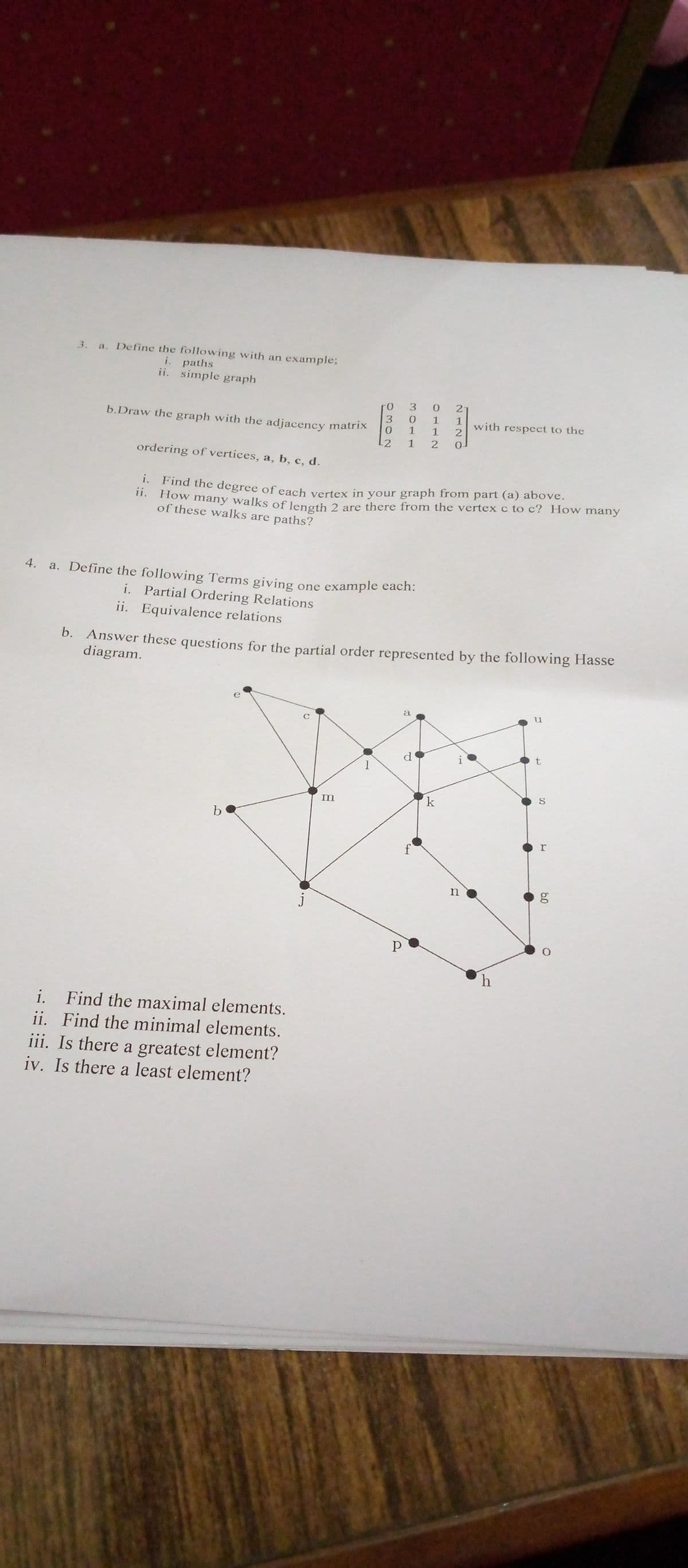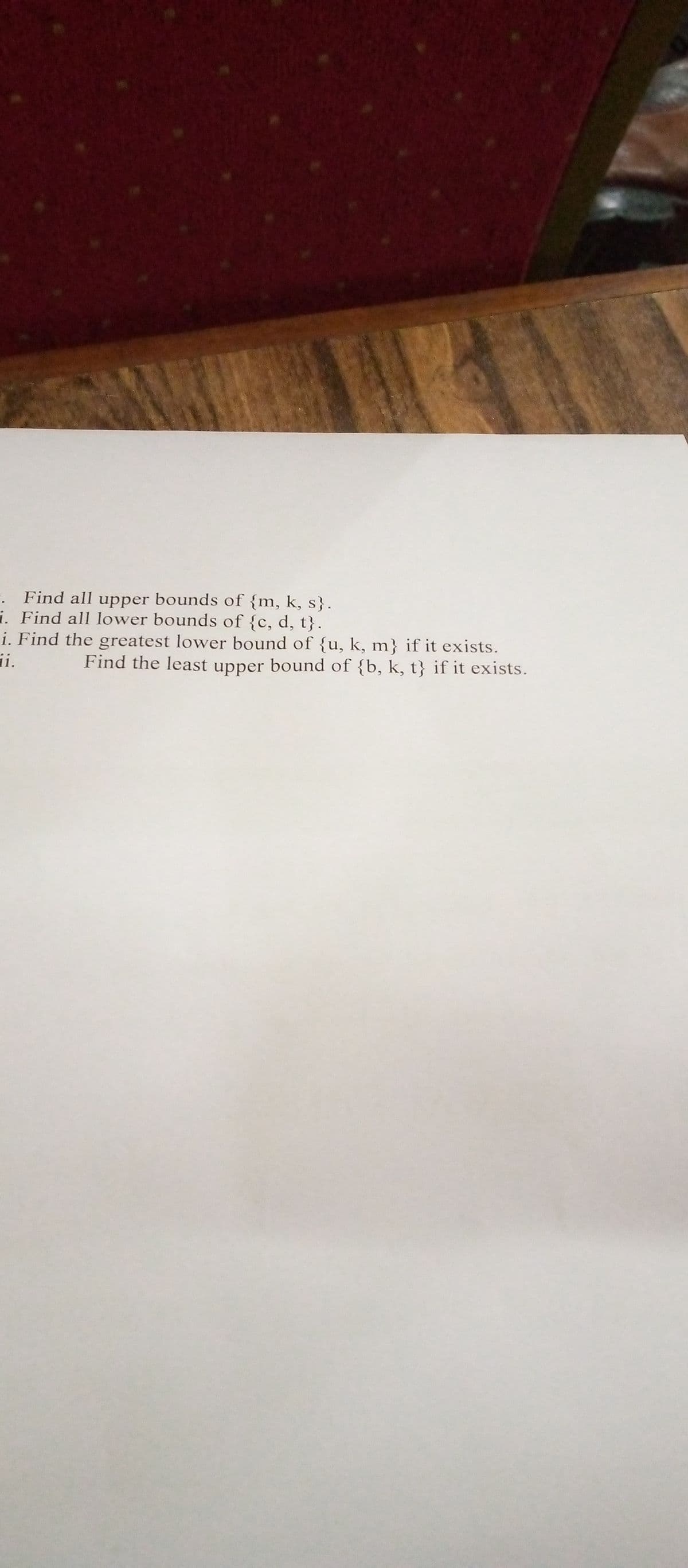3. a. Define the following with an example: i. paths ii. simple graph 0- 3. 2- b.Draw the graph with the adjacency matrix 1 3. 1 with respecct to the ordering of vertices, a, b, c, d. i. Find the degree of each vertex in your graph from part (a) above. 11. How many walks of length 2 are there from the vertex c to c? How many of these walks are paths? 4. a. Define the following Terms giving one example each: i. Partial Ordering Relations ii. Equivalence relations b. Answer these questions for the partial order represented by the following Hasse diagram. 1 S m k b r n h i. Find the maximal elements. ii. Find the minimal elements. iii. Is there a greatest element? iv. Is there a least element?
3. a. Define the following with an example: i. paths ii. simple graph 0- 3. 2- b.Draw the graph with the adjacency matrix 1 3. 1 with respecct to the ordering of vertices, a, b, c, d. i. Find the degree of each vertex in your graph from part (a) above. 11. How many walks of length 2 are there from the vertex c to c? How many of these walks are paths? 4. a. Define the following Terms giving one example each: i. Partial Ordering Relations ii. Equivalence relations b. Answer these questions for the partial order represented by the following Hasse diagram. 1 S m k b r n h i. Find the maximal elements. ii. Find the minimal elements. iii. Is there a greatest element? iv. Is there a least element?
Linear Algebra: A Modern Introduction
4th Edition
ISBN:9781285463247
Author:David Poole
Publisher:David Poole
Chapter3: Matrices
Section3.7: Applications
Problem 74EQ
Related questions
Question
100%

Transcribed Image Text:a. Define the following with an example:
i. paths
ii. simple graph
3.
21
b.Draw the graph with the adjacency matrix
1
with respect to the
2.
0.
-2
ordering of vertices, a, b, c, d.
: Find the degree of each vertex in your graph from part (a) above.
1. How many walks of length 2 are there from the vertex c to c? How many
of these walks are paths?
4.
a. Define the following Terms giving
one example each:
i. Partial Ordering Relations
ii. Equivalence relations
b. Answer these questions for the partial order represented by the following Hasse
diagram.
a
u
d'
m
k
h
i. Find the maximal elements.
ii. Find the minimal elements.
iii. Is there a greatest element?
iv. Is there a least element?
60
2110O
3011

Transcribed Image Text:-. Find all upper bounds of {m, k, s}.
i. Find all lower bounds of {c, d, t}.
i. Find the greatest lower bound of {u, k, m} if it exists.
ii.
Find the least upper bound of {b, k, t} if it exists.
Expert Solution
This question has been solved!
Explore an expertly crafted, step-by-step solution for a thorough understanding of key concepts.
Step by step
Solved in 5 steps with 4 images

Knowledge Booster
Learn more about
Need a deep-dive on the concept behind this application? Look no further. Learn more about this topic, advanced-math and related others by exploring similar questions and additional content below.Recommended textbooks for you

Linear Algebra: A Modern Introduction
Algebra
ISBN:
9781285463247
Author:
David Poole
Publisher:
Cengage Learning

Linear Algebra: A Modern Introduction
Algebra
ISBN:
9781285463247
Author:
David Poole
Publisher:
Cengage Learning